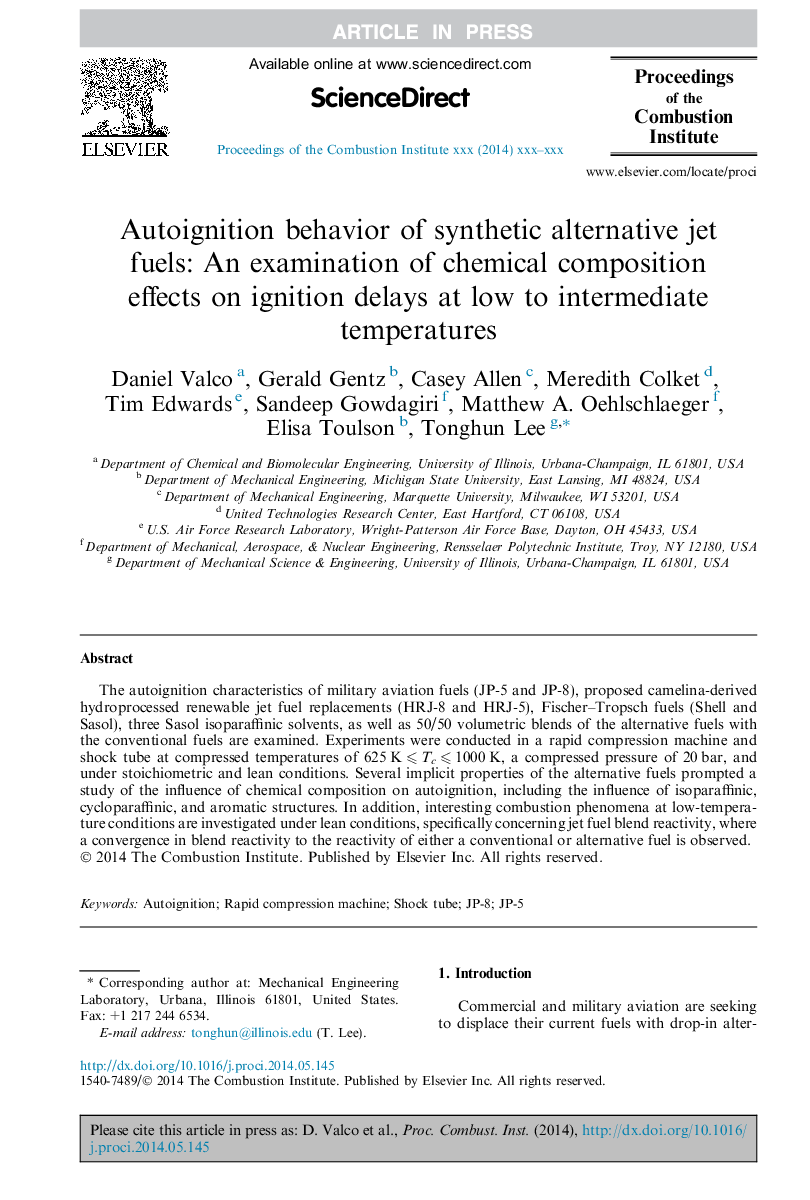| Article ID | Journal | Published Year | Pages | File Type |
|---|---|---|---|---|
| 4915551 | Proceedings of the Combustion Institute | 2015 | 9 Pages |
Abstract
The autoignition characteristics of military aviation fuels (JP-5 and JP-8), proposed camelina-derived hydroprocessed renewable jet fuel replacements (HRJ-8 and HRJ-5), Fischer-Tropsch fuels (Shell and Sasol), three Sasol isoparaffinic solvents, as well as 50/50 volumetric blends of the alternative fuels with the conventional fuels are examined. Experiments were conducted in a rapid compression machine and shock tube at compressed temperatures of 625 K ⩽ Tc ⩽ 1000 K, a compressed pressure of 20 bar, and under stoichiometric and lean conditions. Several implicit properties of the alternative fuels prompted a study of the influence of chemical composition on autoignition, including the influence of isoparaffinic, cycloparaffinic, and aromatic structures. In addition, interesting combustion phenomena at low-temperature conditions are investigated under lean conditions, specifically concerning jet fuel blend reactivity, where a convergence in blend reactivity to the reactivity of either a conventional or alternative fuel is observed.
Related Topics
Physical Sciences and Engineering
Chemical Engineering
Chemical Engineering (General)
Authors
Daniel Valco, Gerald Gentz, Casey Allen, Meredith Colket, Tim Edwards, Sandeep Gowdagiri, Matthew A. Oehlschlaeger, Elisa Toulson, Tonghun Lee,
